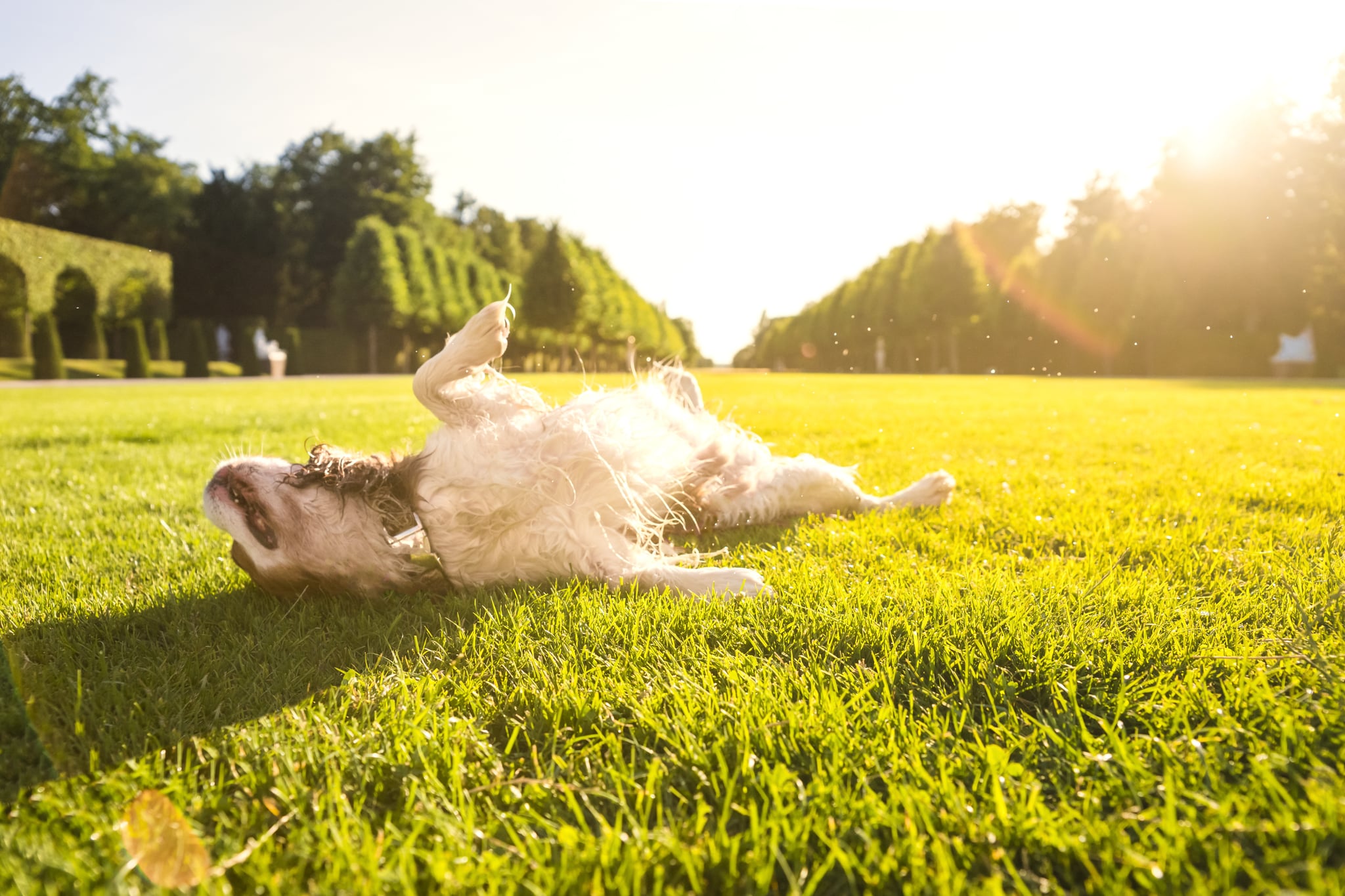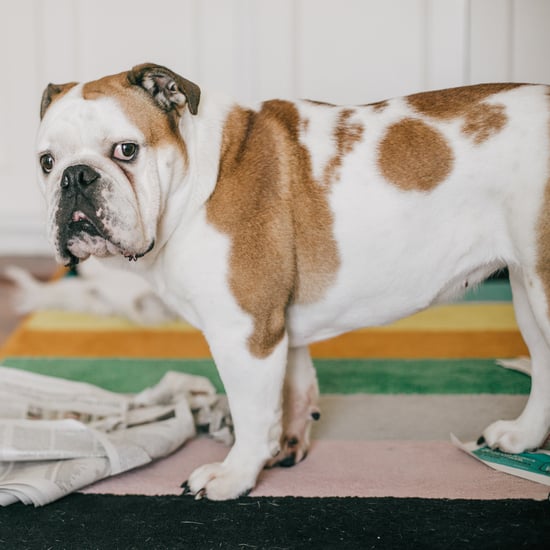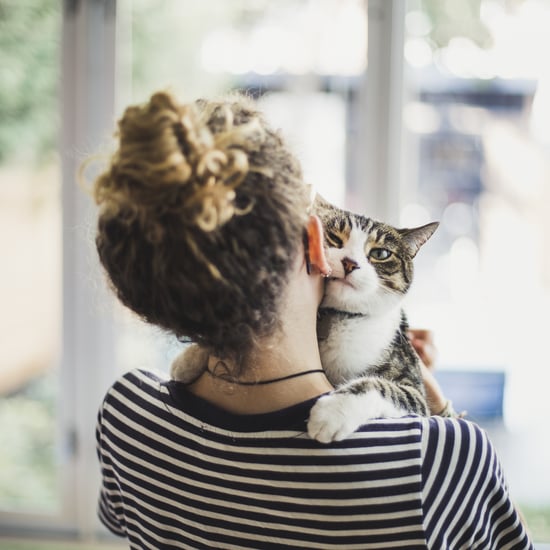Why Does My Dog Lay in the Sun?
Your Dog Likes Lying in the Sun for the Same Reason You Do — It Feels Nice!

Like many other dogs, my dog Audrey loves to spend time in the sun. In fact, when she's outside in the backyard, she often finds a pocket of sunshine to lie in, basking in the glow on the grass or on the sunny concrete. She even does the same thing in the house, gravitating toward sunny patches of floor near windows. But why? And most importantly, is it OK for her to do so? How long is too long in the sun? For answers, POPSUGAR spoke to two veterinarians.
Why Do Dogs Like to Lie in the Sun?
They basically like it for the same reasons many of us do: It's enjoyable and can be relaxing to feel sun and warmth. "While we don't know everything that goes on inside a dog's mind, it's reasonable to suspect that lying in the sun feels good to dogs — just like it does for humans," says Zay Satchu, DVM, co-founder and chief veterinary officer at Bond Vet. "Sunshine can be a natural mood booster and its warmth can be soothing and relaxing."
Does My Dog Benefit from Lying in the Sun?
Sunlight may play a role in regulation of melatonin and the circadian rhythm (the sleep-wake cycle), Dr. Satchu told POPSUGAR. "If a dog gets enjoyment from lying in the sun, that can be beneficial to their overall lifestyle, mood, and mental wellbeing."
Sunshine also can provide some Vitamin D benefits, but not as much as it does for humans or other animals. Although many animals do require UV light exposure for their body to produce Vitamin D, that isn't the case for dogs, explained Michelle Lugones, DVM, veterinarian at the Best Friends Animal Society in the US. "They obtain the vast majority of their Vitamin D in their diet, so aside from potentially enjoying the sensation of basking in the sun, dogs don't need to sunbathe to produce Vitamin D," she told POPSUGAR.
Are the Downsides of My Dog Laying in the Sun?
Just like for humans, getting too much sun exposure is never a good thing — it can lead to skin irritation, sunburns, dehydration, overheating, and even cancer. "If it's very hot or humid, or a dog has a predisposing health condition, lying in the sun can lead to dehydration, difficulty breathing, or heatstroke," said Dr. Lugones.
And although a dog's fur can protect them from some of these effects, dogs with thin coats or light-coloured fur are at a higher risk for sun exposure, the experts said. And areas without much fur — such as the top of the nose or parts of the belly — are more susceptible to sun damage.
Can Dogs Get Heatstroke from Laying in the Sun?
Dogs have a few ways to keep themselves comfortable in the heat, says Dr. Lugones, like panting, lying on a cool surface, perspiring through their paw pads, drinking cool water, and lying in the shade. "If these mechanisms aren't available to them, they are at risk for heatstroke."
The good news, said Dr. Satchu, is that most dogs will naturally move out of the sun before they are at risk of overheating. "Exceptions may include dogs that have been given a sedative, or dogs that have any health condition that may make it more difficult for them to regulate their body temperature or physically move away from a sunny area," she said.
Overweight dogs, dogs with heart disease, asthma, or those who may be dehydrated are at greater risk of developing adverse effects from being in the heat too long, added Dr. Lugones.
Potential signs of heatstroke include heavy panting, difficulty breathing, lethargy, weakness, hypersalivation, and vomiting. If a dog may be suffering from heatstroke, they should be brought to a veterinary hospital at once.
How Can You Protect Your Dog From Too Much Sun Exposure?
It's crucial for all dogs to have access to a cooler, shady place to rest and to have plenty of water available, said Dr. Satchu. Keep an eye on your dog to make sure they aren't exhibiting any signs of too much sun exposure.
And while most dogs can enjoy time in the warmth and sun, if it's very hot or humid outside, it's important to keep walks and time outside to a minimum, said Dr. Lugones. "During those times, take your dog outside either in the early morning or the evening to avoid extreme temperatures. When your dog is outside in the heat always provide shade, cold water, and avoid the hot sidewalks."



